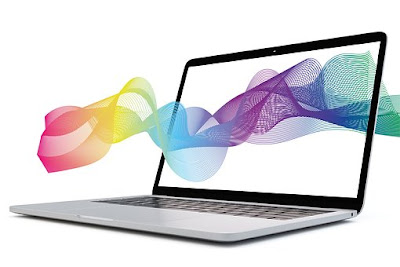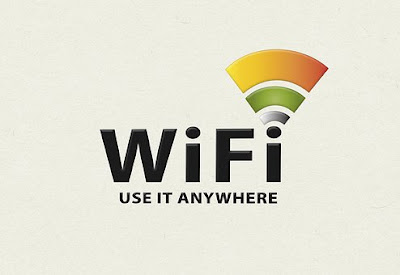How display works Display technologies
Now we often hear terms like IPS LCD terms like LED thrown
around in association with screens and monitors but what do these terms
actually mean what are the underlying technologies behind all these complex on
in terms well today we're gonna take a look at just a small number of these
display technologies to try and better understand how they work you're watching
another random Wednesday episode on zero six one two TV hello and welcome to
another random Wednesday episode today we're going to be taking a look at five
different display technologies what we'll do is we'll try to understand you
know how they actually work and we'll try to talk about something special about
each one of them we're gonna start with the more historical of the display
technologies and we'll sort of work our way forward towards the future so
without further ado let's jump into our very first display technology first and
foremost we have key to reduce CRTs you know those those very huge monitors
will get you better back CRTs are made up of two key components one or more
electron guns at the back as well as a phosphorescent screen in front here's
how it works the way a CRT works is relatively simple the electron gun actually
fires an electron forwards towards the street the electron actually passes
through a set of magnets and these magnets can actually deflect the particle so
that it can hit different positions on the screen by varying the magnetic field
you can actually cost the stream of electrons to scan the entire screen thus
drawing your image to draw a color image basically multiple electron guns are
used at slightly offset positions thanks to the fact that they're at somewhat
offset positions these electrons actually hit the screen at slightly different
angles in order to have each one of these electrons hit their respective color
a mask essentially present to block of electrons coming in from the wrong angle
this actually allows you to pick and choose which electron corresponds to which
color and that's how you actually draw out a color image here's something
special about CRTs since electrons are actually deflected by a magnetic field
well you can actually cause a CRT to behave erratically if you would actually
change or add to that field in fact to do this you just need to hold a reasonably
strong magnet up to the front or the sides of a CRT TV and you'll actually
cause the colors to go all weird what's even worse is if you actually have a
magnet that is
reasonably strong or you know you hold it up long enough you
could actually end up magnetizing areas inside of the screen and that of course
creates a permanent magnetic field that deflects all electrons the wrong way
what that means is you could end up with four yet splotches of color even if
you actually you know bring that magnet somewhere else this is why some
computer monitors actually have a degauss option the whole idea is well when
you actually you know select the degauss option it tries to wipe out any
lingering magnetic fields to fix this problem let's move on to our second of
somewhat historical display technologies this is called DLP also known as
digital light processing now this one is very interesting it tends to be used
in projection systems the most basically you have a chip and the chip actually
controls an array of micro mirrors you have a separate light sauce and what
happens is the chip can actually sort of move the mirrors to reflect the light
from the light source out towards a lens or back into the body of the projector
itself onto a heat sink as you can imagine this mechanism is how individual
pixels I actually switched on or off just something special about DLP they're
actually some very interesting caveats as to how it actually works as you can
imagine well the light sources at one intensity so if you actually want to show
up pixal with you know sort of a middle ground intensity what happens is the
mirrors I actually toggle back and forth very quickly the time in which it is
actually reflecting light versus the time in which it is not is how you
actually create different intensities of brightness in addition this system
also doesn't actually display color in order for it to properly display color
the easiest way is to use a color wheel and that basically filters the color of
the light so as you can imagine what is happening is the color wheel will
rotate to say red and well the DLP chip itself basically reflects lights in the
red Channel they we switch very quickly degree you know both in terms of the
color wheel as well as the image that is displayed by the DLP chip and once
again for blue so in fact the red green and blue channels are actually being
delivered at different times that is why if you are actually you know with your
hand really quickly in front of a DLP projector you will see a very interesting
multicolored shadow this happens because well your hand is moving very quickly
and it's actually shadowing the red green and blue channels at different points
in time so you end up seeing shadows that are cast by the different channels
the third display technology you will be looking at today is LCD all liquid
crystal display now unfortunately to explain how this works we need to go into
a little bit of physics so do bear with me we're gonna actually try to
understand the concepts of polarization okay so here's the deal light is
actually an electromagnetic wave what this means is is actually an electric
field and a magnetic few oxidizing and right angles however for the purpose of
this explanation just imagine it to be a single wave we're going to be talking
about the direction of the wave and that actually comes from the direction of
the electric field so yeah for the sake of simplicity let's just imagine it is
one wave as mentioned this wave when it's propagating forward can actually be
oriented in any direction for most light sources what you actually get is light
coming out in all different polarizations however what wecan do is we can use a polarizing filter to filter out waves with certain polarizations this actually leads to an interesting effects which directly contributes to how an LCD actually works here's a view let's say we hold up a polarizing filter to a source of light let's just say that the direction of this filter is vertical what the species will filter out all directions of waves except those in a vertical direction then we introduce another polarizing filter except this one is oriented in the horizontal direction because of its orientation it blocks out any lights that is vertically polarized at the same time since it has no horizontally polarized light to work with we end up with no light at all by just holding up these two polarizing filters at perpendicular directions to each other we actually end up blocking out all light however more interestingly if we were to actually rotates with the front polarizer slowly until it lines up with the polarizer at the back we are actually allowing more and more light to come true and that is in fact how we use polarisers to control light intensity with this in mind we can actually appreciate how LCD actually works first we start off with two perpendicular polarizing filters so just like what we've explained earlier this piece that normally lights passing through is completely blocked then comes the star of the show al liquid crystal we stick a little bit of it in between the two layers of polarizing filters and this actually creates a very interesting effect making it a the type of liquid crystal used is called twisted nematic or t and for short the idea is this crystal has a twisted structure and as a result actually rotates the polarization of the light such that the polarization actually becomes correct for the front panel and as a result light goes right through however when we actually apply a current to the crystal and actually untwist and as a result it no longer rotates the lights such that it can pass through the front polarizer and as such the area appears dark that is in fact how a liquid crystal display works by applying current to selected areas of liquid crystal what we end up doing is we end up blocking out some amount of light and as a result we can use that to draw an image so what's special about LCDs is that they actually cannot generate light all they do is manipulate existing light that is why for simpler devices like say calculators we have an LCD screen and behind it we actually have a reflective panel this panel is able to you know collect light from the surroundings and bounce it back out the LCD panel then actually you know selectively blocks out some area of the light thus acting as a display for more complex displays you know in cases where we actually want a display to be emissive what we'll have to do is to actually install a backlight behind the screen itself that is in fact how a lot of the monitors these days actually work of course a combination of these two can be used as well and one very common example of this as in digital watches most of the time you can actually read you know the time of a watch because of the reflective screen at the back however if you're in the dark press a button and a back light comes on so yeah that's your combination of the two technologies you may also have heard of the term IPs used in conjunction with you know LCD screens IPS is just a different approach in actually building the liquid crystal parts of the screen it is in fact just an alternative to the twisted nematic liquid crystals because of the way it actually you know positions some of its in it what we end up with is a better viewing angle as well as better color reproduction we move on once again to LED now LED stands for light emitting diodes and it's in fact well some way to generate light using a semiconductor now unfortunately it is going to be quite difficult to explain how an LED actually works while we are about to see extremely simplified if you're interested to find out more I highly encourage you do go and actually read up on the subject
because that's a lot more of this than meets the eye so use a view everything is made up of atoms atoms have a nucleus at the center which is positive and there are a bunch of electrons actually orbiting the outside these electrons are negative and they sort of cancel out or balance out be positive charge from the nucleus and so for the vast majority of atoms you find in the real world there is this equilibrium and therefore everything is good in a semiconductor however we can actually sort of disturb this equilibrium this allows us to create what is known as p-type and n-type semiconductors you can imagine a p-type semiconductor as positive because some of the electrons have been removed on the other hand and n-type can be considered negative because more electrons have actually been added to that for an LED what we do is we actually stick a p-type and n-type semiconductor right next to each other creating what is known as a PN Junction when you actually apply a current to a PN Junction you are sort of pushing the excess electrons on the N side towards the P side and this is where well your semiconductor becomes a conductor as a side effects of this happening light generation actually happens the reason for this put extremely simply is that when electrons are on the N side they actually have a higher energy level when they actually scoots over to the P side and fall into one of the holes they end up existing at a lower energy level that difference in energy needs to go somewhere and in fact it manifests itself as a packet of lights that is essentially how an LED works in extremely simplified terms now in conjunction with LEDs you may have heard of the term or LED and what that simply means is well organic LEDs the thing the material that's actually creating the elect in essence effect it's in fact organic in nature and I can refer to either some kind of molecule or some kind of long polymer what's special about LEDs is that well they can generate their own light and what this means is they can not only be used as a display you know something that you actually look at but that can also be used as a light source in fact the term LED panel can both refer to a screen or an actual light source itself and thanks to the versatility of LEDs well you can actually create light sources that you can manipulate LED lights can be manipulated to show different colors different intensities and if you were to actually hook them up to a micro controller you can even set them up to do some cool light shows let's move on to our last item for the day e paper now this one is very cool in a sense that it actually mimics the behavior of well just a sheet of paper most a paper technologies actually work with physical colored pigments and basically what happens is well there are some black and white pigments they're charged differently and basically in order to toggle the color of an individual pixel you apply an electric field on that pixel itself this causes the pigments to either move or reorient it based on your charges and as such change the color of the actual pixel itself what's really special about many ePaper implementations is that it requires zero power except when a state is being toggled the reason for this is well once a state is actually changed it is locked in you don't actually require any more power for it to stay in that state you can of course imagine that that is not true for many other you know different display technologies say LCD you have to constantly power a pixel of LCD so that you know the crystal actually stays untwisted another strong point of a paper is that it is highly readable under any lighting conditions the reason for this is because well in order to show intensity we're just using pigments which behave like well pigments on paper and that's it these are some of the more common display technologies that you expect to see these days this is of course not an exhaustive list each one of these technologies branch out a lot more and they have their own variants...








No comments:
Post a Comment